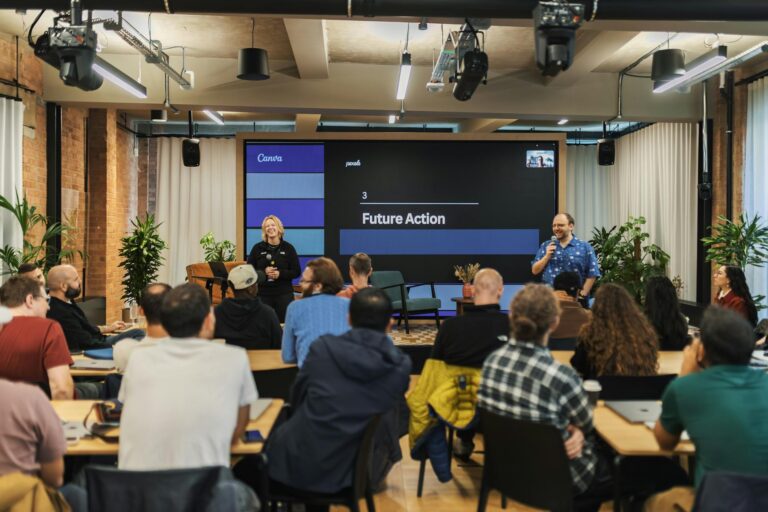AI Trends Shaping 2025: Innovations and Industry Insights
AI Trends Shaping 2025: Innovations and Industry Insights
Imagine a world where AI seamlessly anticipates your needs, revolutionizes industries, and reshapes our daily lives. As we look ahead to 2025, several groundbreaking AI trends are poised to redefine our reality. Staying ahead of these AI trends is crucial for businesses and individuals alike to harness their transformative potential.
The Rise of Edge AI
Edge AI, which involves processing AI algorithms locally on devices rather than relying on centralized cloud servers, is set to explode in popularity. This shift brings numerous advantages, from reduced latency to enhanced privacy and improved efficiency.
Benefits of Edge AI Processing
– Reduced Latency: By processing data closer to the source, Edge AI significantly reduces the time it takes to get a response, making it ideal for real-time applications like autonomous vehicles and industrial automation.
– Enhanced Privacy: Processing data on-device minimizes the need to transmit sensitive information to the cloud, thereby enhancing data privacy and security.
– Improved Efficiency: Edge AI reduces the bandwidth required for data transmission, resulting in lower operational costs and more efficient use of resources.
– Reliability: Edge AI ensures continuous operation even when cloud connectivity is intermittent or unavailable, critical for remote or disaster-prone areas.
Edge AI Applications Across Industries
– Healthcare: Wearable devices that monitor vital signs and provide immediate feedback without sending data to external servers.
– Manufacturing: Predictive maintenance systems that analyze sensor data on equipment to identify potential failures before they occur.
– Retail: Smart cameras that analyze customer behavior in real-time to optimize product placement and improve the shopping experience.
– Transportation: Autonomous vehicles that process sensor data locally to make immediate decisions, ensuring safety and responsiveness.
Advancements in Natural Language Processing (NLP)
Natural Language Processing (NLP) continues to evolve at an impressive pace, making interactions between humans and machines more seamless and intuitive. NLP advancements are pivotal in shaping how we communicate with technology and extract value from textual data.
Enhanced Understanding and Generation
– Sentiment Analysis: NLP algorithms can now more accurately gauge the sentiment behind text, providing valuable insights for customer feedback analysis and brand monitoring.
– Contextual Understanding: NLP models are becoming better at understanding the context of conversations, enabling more natural and relevant interactions with chatbots and virtual assistants.
– Text Generation: NLP can generate human-like text for various applications, including content creation, report writing, and automated email responses.
– Multilingual Support: Advanced NLP systems can now process and translate multiple languages with greater accuracy, facilitating global communication and collaboration.
NLP in Real-World Applications
– Customer Service: Chatbots powered by advanced NLP can handle a wide range of customer inquiries, providing instant support and freeing up human agents for more complex issues.
– Content Creation: NLP tools can assist in generating blog posts, articles, and marketing copy, saving time and resources for content creators.
– Healthcare: NLP can analyze patient records to identify potential health risks, improve diagnostic accuracy, and personalize treatment plans.
– Finance: NLP can analyze financial news and reports to identify investment opportunities, detect fraud, and assess market sentiment.
The Evolution of Computer Vision
Computer Vision, the field of AI that enables machines to “see” and interpret images, is undergoing rapid advancements. These developments are opening up new possibilities across various sectors, enhancing automation, and improving decision-making processes.
Breakthroughs in Image Recognition and Analysis
– Object Detection: Computer vision algorithms can now identify and track multiple objects in real-time, enhancing surveillance systems and enabling autonomous robots.
– Facial Recognition: Improved facial recognition technology is being used for security, access control, and personalized experiences in retail and hospitality.
– Medical Imaging: Computer vision is revolutionizing medical diagnostics by analyzing X-rays, MRIs, and CT scans to detect anomalies and assist in treatment planning.
– Augmented Reality: Computer vision enables AR applications to overlay digital information onto the real world, creating immersive and interactive experiences.
Practical Applications of Computer Vision
– Autonomous Vehicles: Computer vision is critical for enabling self-driving cars to perceive their surroundings, navigate roads, and avoid obstacles.
– Retail: Smart shelves use computer vision to monitor product levels, track customer interactions, and optimize inventory management.
– Agriculture: Drones equipped with computer vision can monitor crop health, detect pests, and optimize irrigation, improving yields and reducing waste.
– Security: Surveillance systems powered by computer vision can automatically detect suspicious activities, enhancing security in public spaces and private properties.
AI-Driven Automation and Robotics
The integration of AI with automation and robotics is transforming industries by enabling more efficient, flexible, and intelligent systems. This convergence is driving significant improvements in productivity, safety, and overall operational performance.
Advancements in Robotic Capabilities
– Collaborative Robots (Cobots): These robots are designed to work alongside humans, assisting with tasks that require precision, strength, or repetition.
– Autonomous Mobile Robots (AMRs): AMRs can navigate complex environments without human guidance, making them ideal for logistics, warehousing, and delivery services.
– Dexterous Manipulation: AI-powered robots are becoming more adept at handling delicate or irregularly shaped objects, expanding their applications in manufacturing and healthcare.
– Swarm Robotics: Multiple robots can work together to perform complex tasks, such as search and rescue operations, environmental monitoring, and construction projects.
Impact on Various Industries
– Manufacturing: AI-driven robots automate assembly lines, perform quality control inspections, and optimize production processes, leading to increased efficiency and reduced costs.
– Logistics: Robots streamline warehouse operations, automate order fulfillment, and improve delivery times, enhancing the efficiency of supply chains.
– Healthcare: Robots assist in surgeries, dispense medications, and provide support to patients, improving the quality of care and reducing the workload on healthcare professionals.
– Agriculture: Robots automate planting, harvesting, and weeding, reducing the need for manual labor and improving crop yields.
Ethical and Responsible AI Development
As AI becomes more pervasive, ethical considerations and responsible development practices are gaining increasing importance. Ensuring fairness, transparency, and accountability in AI systems is crucial for building trust and mitigating potential risks.
Key Principles for Ethical AI
– Fairness: AI systems should be designed and trained to avoid bias and discrimination, ensuring equitable outcomes for all individuals and groups.
– Transparency: AI algorithms should be transparent and explainable, allowing users to understand how decisions are made and identify potential issues.
– Accountability: Organizations should be accountable for the decisions made by their AI systems, establishing clear lines of responsibility and implementing oversight mechanisms.
– Privacy: AI systems should respect individuals’ privacy rights, protecting sensitive data and ensuring compliance with privacy regulations.
Strategies for Responsible AI Development
– Diverse Datasets: Training AI models on diverse and representative datasets can help mitigate bias and improve the accuracy of predictions for all populations.
– Explainable AI (XAI): Developing AI algorithms that provide explanations for their decisions can enhance transparency and build trust with users.
– Ethical Frameworks: Implementing ethical frameworks and guidelines can help organizations ensure that their AI systems align with societal values and ethical principles.
– Continuous Monitoring: Regularly monitoring AI systems for bias, errors, and unintended consequences can help identify and address potential issues before they cause harm.
The Growing Importance of AI in Cybersecurity
AI is playing an increasingly vital role in cybersecurity, helping organizations detect and respond to threats more effectively. AI-powered security systems can analyze vast amounts of data, identify patterns, and automate responses, enhancing protection against cyberattacks.
AI-Driven Threat Detection and Prevention
– Anomaly Detection: AI algorithms can identify unusual patterns in network traffic and user behavior, detecting potential security breaches and insider threats.
– Malware Analysis: AI can analyze malware samples to identify their characteristics, predict their behavior, and develop effective countermeasures.
– Phishing Detection: AI can detect phishing emails and websites by analyzing their content, structure, and sender information, protecting users from scams and fraud.
– Automated Incident Response: AI can automate the process of responding to security incidents, such as isolating infected systems, blocking malicious traffic, and restoring data.
Benefits of AI in Cybersecurity
– Enhanced Threat Detection: AI can detect threats that might be missed by traditional security systems, improving the overall security posture of organizations.
– Faster Response Times: AI can automate incident response, reducing the time it takes to contain and mitigate security breaches.
– Reduced Workload: AI can automate routine security tasks, freeing up human analysts to focus on more complex and strategic issues.
– Improved Accuracy: AI can improve the accuracy of threat detection, reducing the number of false positives and minimizing the risk of overlooking genuine threats.
As we look toward 2025, these AI trends promise to revolutionize industries and reshape our lives. From Edge AI to NLP, computer vision, AI-driven automation, ethical AI development, and AI in cybersecurity, the potential applications are vast and transformative. Embracing these advancements and staying informed about the evolving landscape of AI will be crucial for individuals and organizations seeking to thrive in the future.
For more insights or collaboration opportunities, visit www.agentcircle.ai.







